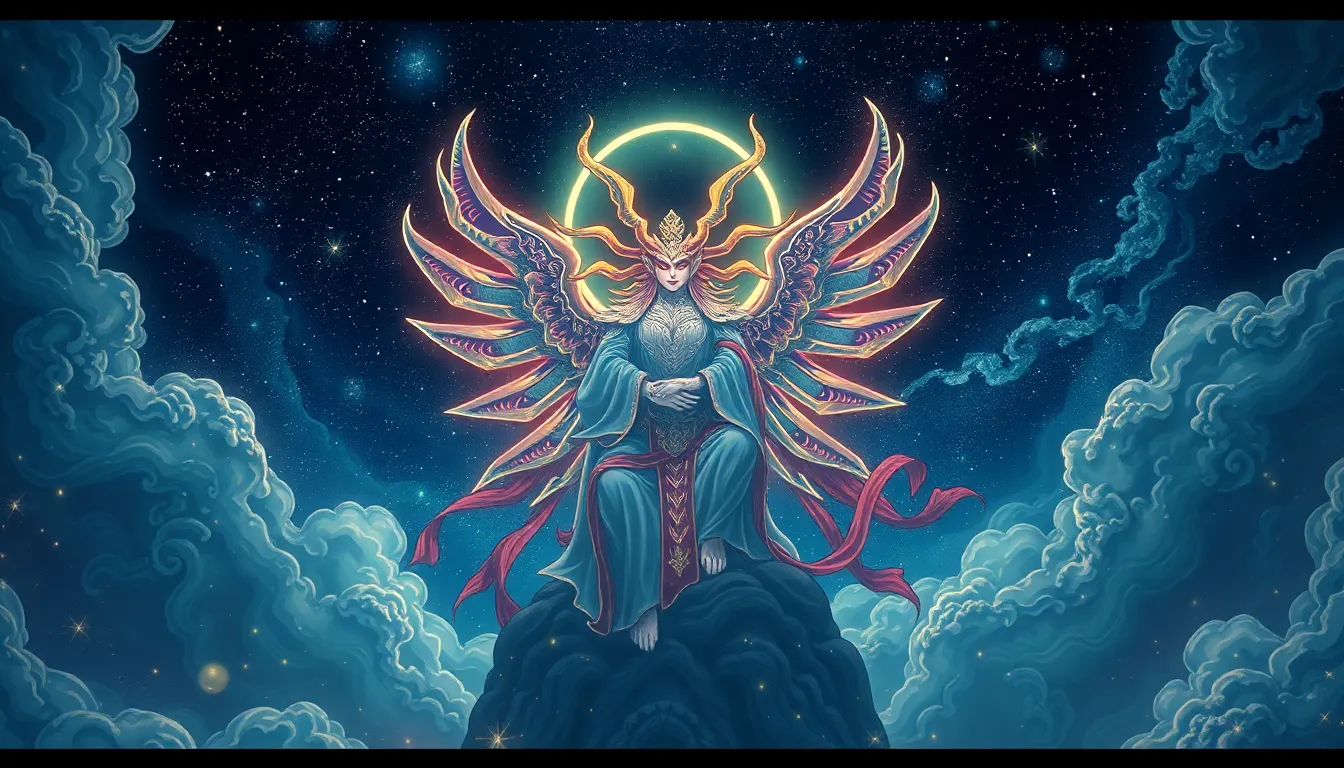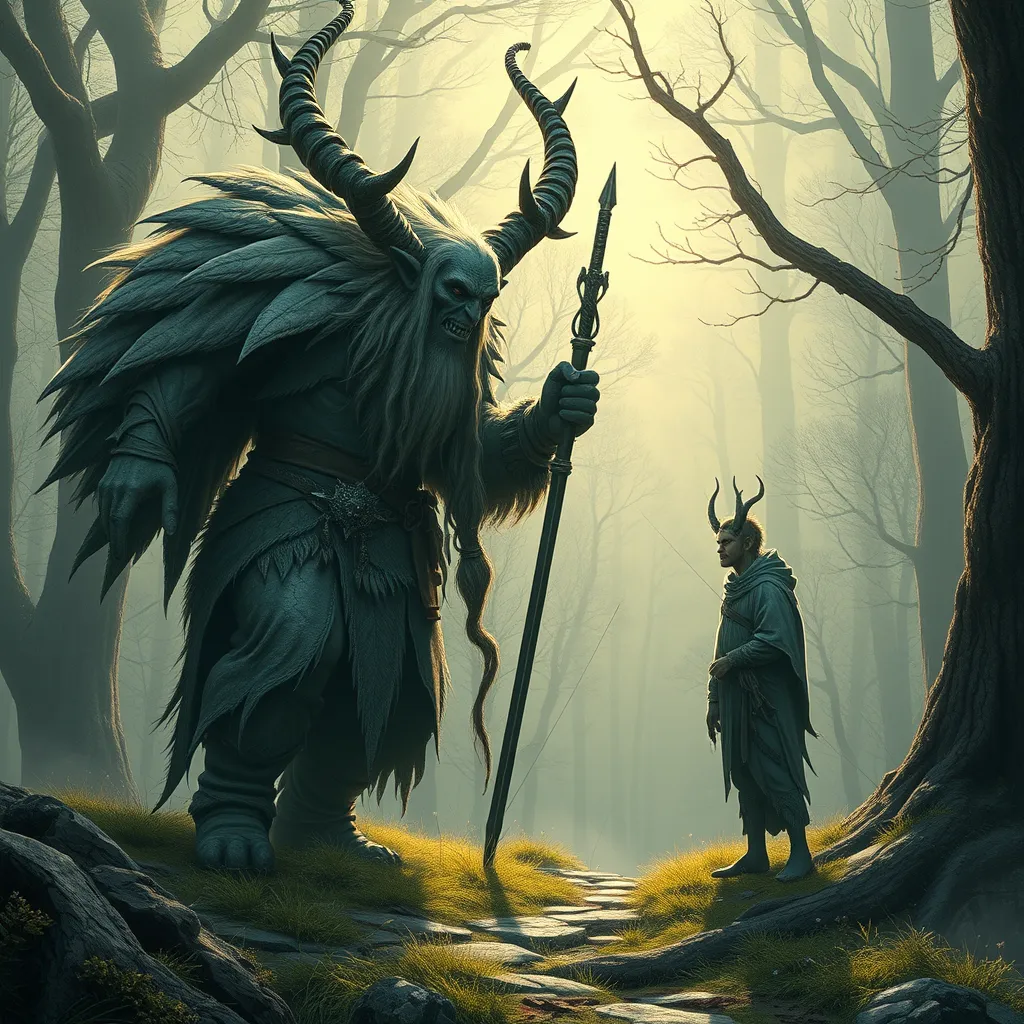The Lamia’s Curse: Tracing the Origins and Transformations of a Deadly Myth
I. Introduction
The Lamia myth is a haunting narrative that has traversed centuries, evolving from its ancient origins into a multifaceted symbol of fear, desire, and female monstrosity. In its various incarnations, Lamia serves as a potent reminder of the complexities of human emotion and societal norms. Understanding the origins and transformations of the Lamia myth enriches our comprehension of cultural narratives and the ways they reflect human psychology.
This article aims to explore the Lamia myth from its ancient roots to its modern adaptations, analyzing its significance throughout history and its relevance in contemporary society.
II. The Ancient Roots of the Lamia Myth
A. Historical context of Lamia in ancient Greece
The Lamia myth emerged in ancient Greece, where it was often associated with the fears and anxieties of a patriarchal society. Traditionally, Lamia was depicted as a beautiful woman who was transformed into a monstrous figure, reflecting the cultural perception of women who defied societal norms.
B. First literary references and interpretations
The earliest references to Lamia can be traced back to the works of ancient writers. One of the most notable mentions appears in the writings of:
- Hesiod: Describing her as a child-eating monster.
- Plato: Who mentions Lamia as a terrifying figure in his dialogues.
These early interpretations laid the groundwork for Lamia’s complex character, oscillating between beauty and horror.
C. The Lamia as a symbol of female monstrosity
The transformation of Lamia from a beautiful woman into a monster encapsulates societal views on femininity. She embodies the fears of female sexuality and independence, often portrayed as a seductress who lures men to their doom.
III. The Lamia in Classical Literature
A. Analysis of key texts featuring Lamia (e.g., stories by Homer and Ovid)
In classical literature, Lamia appears in various texts that highlight her dual nature. For instance, in Ovid’s “Metamorphoses,” Lamia is depicted as a tragic character cursed to hunt children after losing her own. This portrayal adds depth to her character, presenting her as both a victim and a villain.
B. The evolving portrayal of Lamia in different works
Throughout classical literature, Lamia’s portrayal evolves significantly. In some texts, she is a monstrous seductress, while in others, she is a tragic figure mourning her lost children. This duality reflects the complexity of human emotion and the societal attitudes toward women.
C. The intersection of Lamia with other mythological figures
Lamia’s narrative intersects with numerous other mythological figures, such as:
- Medusa: Another symbol of female monstrosity and transformation.
- Circe: A figure representing female power and the dangers it poses to men.
This intersection highlights the shared themes of fear, desire, and the consequences of female power in mythology.
IV. Cultural Significance and Symbolism
A. The Lamia as a representation of fear and desire
The Lamia myth encapsulates the tension between fear and desire. As a seductress, Lamia embodies the allure of the forbidden, while her monstrous form represents the fears that accompany such desires.
B. Gender dynamics in the Lamia myth
The Lamia narrative also emphasizes gender dynamics, illustrating the societal fears surrounding female autonomy. Women who defy traditional roles often face demonization, exemplified by Lamia’s transformation.
C. The role of the Lamia in ancient rituals and folklore
In ancient rituals, Lamia-like figures were often invoked to ward off evil or to explain misfortunes. These folklore elements highlight the cultural significance of the Lamia as a cautionary tale about the consequences of unchecked desires.
V. The Lamia’s Transformation Through the Ages
A. The shift in the Lamia narrative during the Middle Ages
During the Middle Ages, the Lamia myth underwent significant transformations. She began to be associated with witchcraft and demonic possession, reflecting the era’s fears of female power and sexuality.
B. The impact of the Renaissance and Romanticism on the myth
The Renaissance and Romantic periods revived interest in classical myths, leading to a reimagining of Lamia as a tragic figure. Poets like John Keats crafted narratives that emphasized her beauty and sorrow, further complicating her character.
C. Modern adaptations and reinterpretations in contemporary media
In contemporary culture, the Lamia myth continues to inspire adaptations across various media, including:
- Literature: Novels and short stories reinterpreting her story.
- Film: Horror movies featuring Lamia as a central figure.
- Art: Paintings and sculptures that explore her dual nature.
These adaptations reflect ongoing societal concerns about femininity, power, and monstrosity.
VI. The Lamia in Modern Popular Culture
A. Exploration of Lamia in literature, film, and art
Modern interpretations of the Lamia myth often explore themes of empowerment and fear. In literature, Lamia is portrayed as a complex character navigating her monstrous identity. In film, she is frequently depicted as a horror archetype, representing the dangers of female desire.
B. The resurgence of interest in the Lamia myth in recent years
Recent years have seen a resurgence of interest in the Lamia myth, particularly in feminist literature and horror genres. Writers and filmmakers are reexamining her narrative, often portraying her as a symbol of resilience against patriarchal oppression.
C. Analysis of the Lamia’s role in horror and fantasy genres
In horror and fantasy, the Lamia often embodies the anxieties surrounding female power. She serves as a cautionary figure, warning against the consequences of desire and autonomy, while simultaneously offering a narrative of empowerment.
VII. Psychological and Sociological Interpretations
A. The Lamia as a reflection of societal fears and anxieties
The Lamia myth serves as a mirror to societal fears, particularly those surrounding female independence and sexuality. Her monstrous transformation illustrates the dangers that society associates with women who defy traditional roles.
B. Psychological interpretations of the Lamia as a metaphor for trauma
In psychological terms, the Lamia can be viewed as a metaphor for trauma, particularly the trauma experienced by women. Her narrative speaks to the ways in which society often demonizes women who express their pain or challenge norms.
C. The Lamia myth’s relevance in contemporary discussions on femininity
As discussions around femininity and gender continue to evolve, the Lamia myth remains relevant. It serves as a poignant reminder of the complexities of female identity and the societal pressures that shape it.
VIII. Conclusion
The Lamia myth has undergone significant transformations throughout history, from its ancient origins to its modern adaptations. As a symbol of fear, desire, and female monstrosity, Lamia’s character reflects enduring societal anxieties about femininity and power.
The legacy of the Lamia myth continues to resonate in contemporary culture, offering insight into the complexities of human emotion and societal norms. By exploring such myths, we gain a deeper understanding of human culture and psychology, revealing the timeless narratives that shape our perceptions of identity and power.



